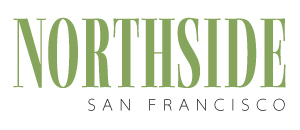Contrary to popular belief, there are an abundance of quality loan programs available for property buyers. Of course, lending practices have changed more than a little since the heyday of the subprime mortgage loan, which is undoubtedly a very good thing. The industry clearly needed to reassess, regroup and revisit its approach to the business. That process is still underway, but in the meantime, loans are more available today than they have been in recent years.
Let’s talk about what’s out there right now. While some of this material is fairly basic, it is nonetheless invaluable if you’re looking for a loan.
When applying for a loan to purchase a condominium, single family home, or multiple-unit building, you must clear three hurdles: (1) meeting your lender’s minimum credit score requirements, (2) verifying assets for the down payment, and (3) verifying sufficient income to support the property’s housing expenses.
MINIMUM CREDIT SCORE REQUIREMENTS
Lenders identify a borrower’s risk profile based on credit history. A statistical analysis of your credit history is numerically expressed with a credit score. Lenders typically use the middle of three scores, obtained from the three major credit-reporting agencies. The credit-scoring system starts at 300 and tops out at 850 as the ceiling. Although FHA allows borrowers with a minimum score of 500 to qualify, most lenders require a higher minimum score.
DOWN PAYMENT OPTIONS
For those just starting out, coming up with a down payment can be challenging. Consider this: the IRS allows you to withdraw up to $10,000 penalty-free from an IRA if used for a first-time home purchase down payment. If married, you can each use $10,000 from your respective IRA for a down payment.
You can borrow up to $417,000 using a conventional loan with 3 percent down or up to $729,750 using a Federal Housing Administration (FHA) loan with only 3.5 percent down. Both of these options also allow you to finance your closing costs. Qualified borrowers with strong credit can borrow up to $2,000,000 with as little as 20 percent down.
SUFFICIENT INCOME/MAXIMUM ALLOWABLE DEBT
A borrower’s debt-to-income ratio (DTI) is defined as his or her existing minimum monthly debt obligations (car payment, minimum credit card payment, and so forth) and the proposed housing expense or PITI (principle and interest payment, property taxes and insurance or home owners’ association fees) divided by the borrower’s gross income. Most loan programs allow a debt-to-income ratio of 45 percent. Borrowers with compensating factors can qualify for a high balance conforming loan limited to $729,750 with a DTI of 50 percent.
INTEREST RATES AND HOME AFFORDABILITY
Those of us in the mortgage business talk frequently about the low interest rates today and shake our heads somewhat in disbelief. Many can remember when interest rates were at 18 percent, compared to today’s roughly 5 percent. Interest rates impact the size of your house payments, and consequently, the affordability of homes, no matter what their asking price. Low interest rates help make homes affordable.
Homes in San Francisco are in fact more affordable today than they have been in years. And loans, recently difficult to find – let alone obtain – are now, finally, more readily available.
Tim Wood is vice president and mortgage advisor of Terra Mortgage Banking, (415) 464-1374, twood@terramb.com.
Mortgage Matters
Today's lending environment
Today's lending environment








